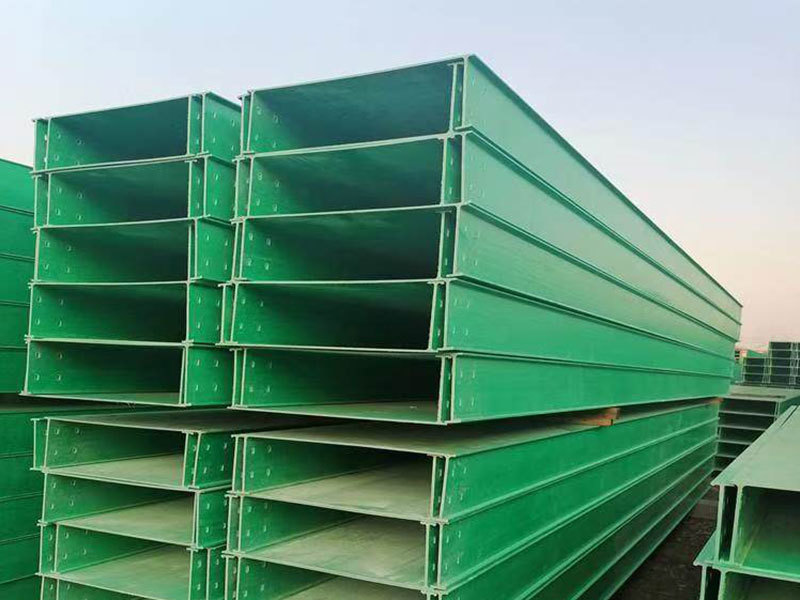What are the application scope and advantages of FRP bridge?

What are the application scope and advantages of FRP bridge?
Fiber Reinforced Polymer (FRP) bridges have emerged as a revolutionary solution in civil engineering, offering unique properties that set them apart from traditional materials like steel and concrete. As infrastructure needs evolve and the demand for durable, sustainable solutions increases, FRP bridges are gaining traction in various applications. This article will explore the application scope and advantages of FRP bridges, shedding light on why they are becoming a preferred choice for modern infrastructure projects.
One of the primary application scopes of FRP bridges is in the construction of pedestrian and bicycle paths. These structures are often required to be lightweight and aesthetically pleasing, making FRP an ideal material. With its excellent strength-to-weight ratio, FRP allows for longer spans without the need for excessive support structures. This not only enhances the visual appeal of the bridge but also reduces the environmental impact associated with constructing large foundations or piers. Moreover, the corrosion resistance of FRP ensures that these bridges can withstand the elements, requiring less maintenance over time.
In addition to pedestrian and bicycle bridges, FRP is increasingly being utilized in vehicular bridge construction. The durability and lightweight nature of FRP materials enable engineers to design bridges that can support heavy loads while remaining easy to transport and install. This is particularly beneficial in remote or challenging locations where traditional materials may pose logistical difficulties. The flexibility of FRP also allows for innovative designs, such as curved or complex geometries, which can enhance the functionality and aesthetic appeal of the structure.
Another significant application of FRP bridges is in areas prone to extreme environmental conditions. For instance, bridges located in coastal regions or areas with high humidity are often subjected to corrosion from saltwater and moisture. Traditional materials like steel and concrete can deteriorate over time, leading to costly repairs and potential safety hazards. In contrast, FRP materials are inherently resistant to corrosion, making them an ideal choice for such challenging environments. This resistance not only extends the lifespan of the bridge but also reduces maintenance costs, providing long-term savings for municipalities and governments.
The use of FRP bridges is also expanding in the realm of temporary and emergency structures. In situations where rapid deployment is essential, such as after natural disasters or in military applications, FRP bridges can be prefabricated and quickly assembled on-site. Their lightweight nature allows for easy transportation, and their modular design facilitates swift installation. This capability is crucial in emergency response scenarios, where restoring access is a priority.
When discussing the advantages of FRP bridges, one cannot overlook their sustainability aspects. As the world becomes increasingly aware of environmental issues, the construction industry is under pressure to adopt greener practices. FRP materials are often produced using less energy than traditional materials, and their longevity reduces the frequency of replacements and repairs, leading to lower resource consumption over time. Additionally, FRP bridges can be designed to incorporate recycled materials, further enhancing their sustainability profile.
Another notable advantage of FRP bridges is their low maintenance requirements. Unlike traditional materials that may require regular inspections, repairs, or coatings to prevent corrosion, FRP bridges are largely maintenance-free. This not only reduces the overall lifecycle costs of the bridge but also minimizes disruptions to traffic and the surrounding environment, as there are fewer construction-related activities needed throughout the bridge's lifespan.
The installation process for FRP bridges is also a significant advantage. Because these bridges can be prefabricated off-site, the construction time is considerably reduced. This means less disruption to the surrounding area and a quicker return to service for roadways and pathways. Additionally, the lightweight nature of FRP components means that less heavy equipment is required for installation, further decreasing the environmental footprint of the construction process.
In terms of design flexibility, FRP bridges offer unprecedented opportunities for engineers and architects. The material can be molded into various shapes and sizes, allowing for creative and innovative designs that meet specific functional requirements. This flexibility not only enhances the aesthetic appeal of the bridge but also allows for tailored solutions that address the unique challenges of each project.
Despite the numerous advantages of FRP bridges, it is essential to acknowledge some challenges associated with their use. The initial cost of FRP materials can be higher than traditional materials, which may deter some project stakeholders. However, when considering the long-term savings from reduced maintenance and extended lifespan, the overall value proposition becomes more favorable. Additionally, as technology advances and production methods improve, the costs associated with FRP are expected to decrease, making it a more accessible option for various projects.
In conclusion, the application scope of FRP bridges is vast, encompassing pedestrian pathways, vehicular bridges, emergency structures, and more. Their unique advantages, including lightweight construction, corrosion resistance, low maintenance, sustainability, and design flexibility, make them an attractive option for modern infrastructure needs. As the construction industry continues to evolve, FRP bridges are poised to play a significant role in shaping the future of civil engineering. By embracing innovative materials like FRP, we can create safer, more durable, and environmentally friendly infrastructure that meets the demands of a growing population.
TAG:
Previous
Next
Previous:
Next:
Related Posts
How to Select the Right FRP Grating







